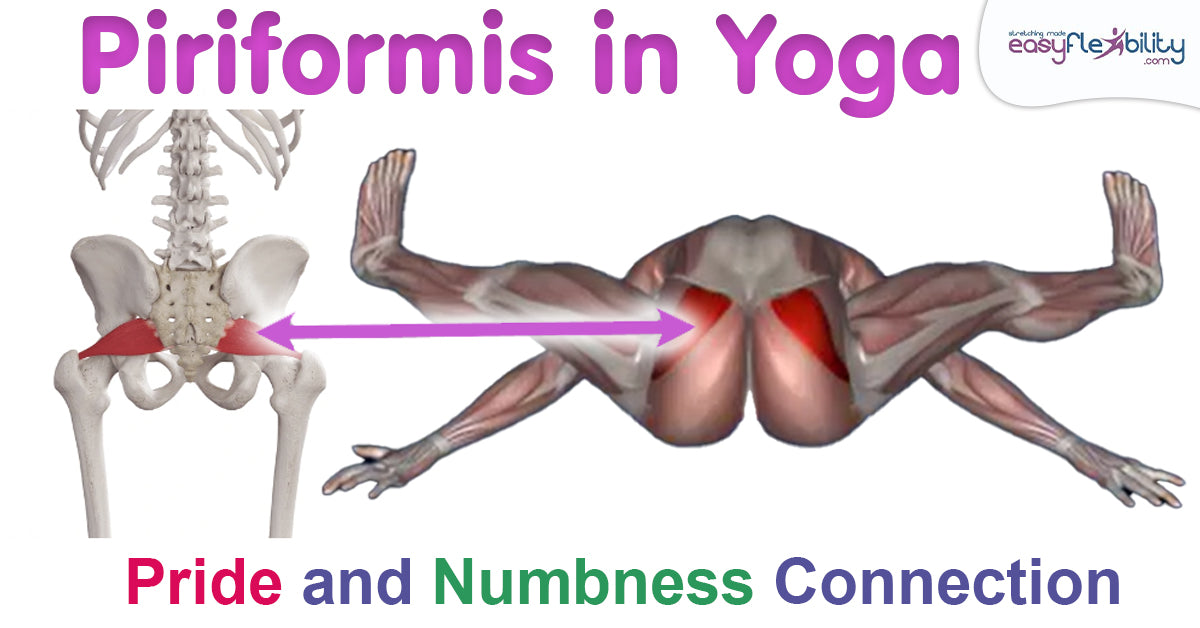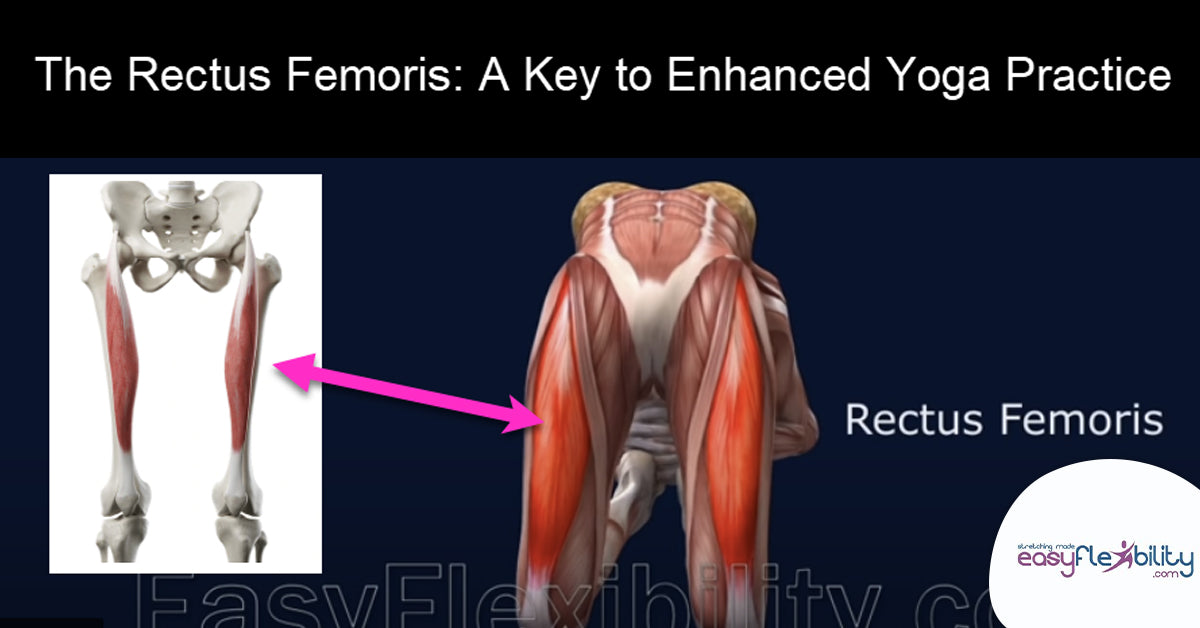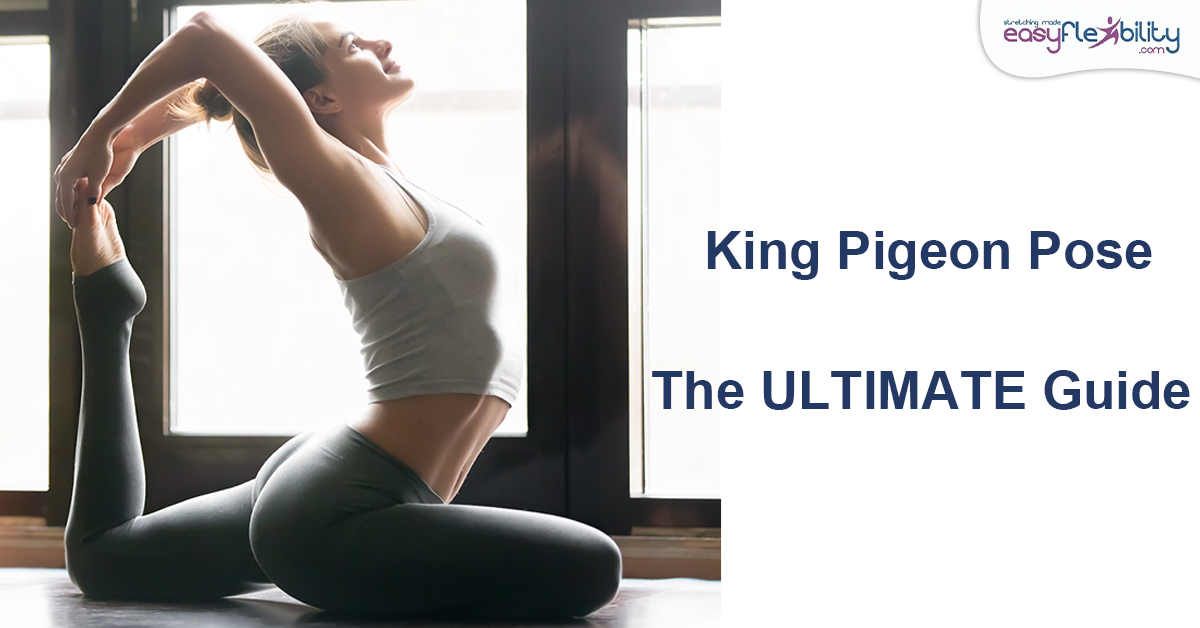Unlocking the Secrets of the Psoas: Your Guide to Yoga Anatomy and Kapotasana
Posted by EasyFlexibility Team on
The Psoas: A Pillar of Yoga Anatomy

When it comes to yoga anatomy, one muscle that often captures the spotlight is the Psoas. This deep-seated core muscle is not just another part of our anatomy; it's a bridge between our physical posture, emotional well-being, and the success of our yoga practice. Today, we're diving deep into the world of the Psoas, exploring its role in yoga anatomy, emotional and physiological links, chakras and understanding how it influences the yoga pose Kapotasana, among others.
Anatomical features and functions of the Psoas Muscle

Before we dive into the critical role the Psoas muscle plays in the realm of yoga, let's carefully examine its anatomical features and functions in detail:
- Psoas Origin: The Psoas major, a vital muscle for various bodily movements, has its origins deep within the abdominal cavity, starting from the twelfth thoracic vertebra (T12) and extending down through the lumbar vertebrae to the fifth lumbar vertebra (L5). This extensive origin point highlights the muscle's significant span across the lower back, underlining its importance in connecting the upper and lower parts of the body.
- Psoas Insertion: Traversing down the pelvis, the Psoas major muscle extends its fibers to insert into the lesser trochanter of the femur. This insertion point is crucial as it allows the Psoas muscle to exert a direct influence on the thigh, enabling a range of movements essential for walking, running, and, of course, various yoga poses. The path from its origin to its insertion point illustrates the muscle's role in bridging the torso and the legs, facilitating a harmonious movement between them.
- Psoas Action: The Psoas major is primarily known for its role in hip flexion, which involves drawing the knee towards the chest—an action fundamental to many daily activities and yoga practices. Beyond hip flexion, the Psoas also plays a pivotal role in lumbar extension and lateral flexion of the spine. This means it not only helps in bending the knee but also assists in arching the back and bending the torso sideways. These actions are integral to maintaining posture, performing various physical activities, and executing numerous yoga asanas, making the Psoas a key muscle in the body's overall movement and stability.
- Psoas Nerve: The innervation of the Psoas major is provided by the lumbar plexus, specifically through nerves originating from the first to the third lumbar vertebrae (L1 to L3). This nerve supply is critical for the functioning of the Psoas, enabling it to contract and relax, which in turn facilitates movement. The lumbar plexus's role in innervating the Psoas underscores the interconnectedness of the body's muscular and nervous systems, ensuring that the Psoas muscle responds appropriately to the body's demands for movement and stability.
Understanding these detailed aspects of the Psoas muscle's anatomy and function provides a foundation for appreciating its significance in yoga and its impact on our overall physical health and well-being.
The Psoas in Action: Yoga Poses Galore
Let's dive into some yoga poses that really spotlight the Psoas muscle, making it the star of the show. These poses not only challenge and engage the Psoas but also bring a whole host of benefits, from flexibility to emotional well-being. Ready to explore? Here we go:
Kapotasana (Pigeon Pose)
In Kapotasana, the stretch of the Rectus Femoris is profound in the extended leg, promoting an increase in flexibility and a deep opening in the hip flexors. This pose exemplifies how flexibility and strength can coexist, with the Rectus Femoris at the heart of this balance.
But it's not just about the therapeutic and yogic wonders; deep backbends like Kapotasana unlock a new level of grace and efficiency in movements that require a supple back. Whether it's the precise forms of martial arts, the flowing sequences of yoga, the expressive movements of dance, the elegant glides of figure skating, or any discipline where back bending is key, mastering this pose can elevate performance to dazzling heights.

🌟 Transform Your Kapotasana Journey with Our Revolutionary Program! 🌟
Struggling to master the Kapotasana pose? Traditional yoga methods can feel like a slow journey, often because they work on multiple muscle groups simultaneously, making progress feel out of reach.
But what if there was a different way? Our unique program breaks the mold of standard yoga practices. Instead of relying on a series of preparatory Asanas, we introduce you to the groundbreaking Zaichik Stretching Techniques. This innovative approach isolates each muscle, allowing for a targeted stretch that's not only pain-free but also fast, easy, and safe.
Say goodbye to the frustrating stretch reflex and hello to rapid flexibility gains. By focusing on lengthening the muscles first, we then seamlessly reintegrate the pose, propelling you quickly towards achieving the full Kapotasana Pose.
Don't let traditional methods hold you back. Embrace our method and watch as you swiftly unlock the beauty and benefits of Kapotasana. Join our program today and experience the difference for yourself!

Anjaneyasana (Low Lunge)
Think of Low Lunge as the Psoas's best friend. It's a foundational pose that really gets into those hip flexors, stretching and opening them up. But that's not all – it also gives your lower back some love, strengthening it with each breath. It's like you're taking a step back to leap forward, opening up your body and preparing it for more complex poses. Plus, it's a great way to find a moment of calm and focus in your practice.

Virabhadrasana I (Warrior I)
Now, let's channel our inner warrior with Warrior I. This pose is all about engagement and balance, and guess who's playing a leading role? Yep, the Psoas. By flexing the hip, it helps you find that stability and strength that's so characteristic of a warrior. It's a powerful pose that not only improves your physical balance but also instills a sense of inner strength and determination. You're not just standing there; you're conquering.

Setu Bandhasana (Bridge Pose)
Last but not least, let's talk about Bridge Pose. Imagine you're creating a bridge with your body, lifting your hips towards the sky. While it's a fantastic workout for your back and glutes, it also gives your Psoas a gentle stretch. It's like you're saying, "Hey, it's time to relax," helping to ease tension and promote relaxation. It's a gentle reminder that sometimes, strength comes from letting go and finding ease within the effort.
Each of these poses offers a unique way to engage and explore the capabilities of your Psoas muscle. Whether you're looking for strength, flexibility, emotional release, or balance, incorporating these poses into your yoga practice can help you achieve a deeper connection with your body. So, why not give them a try and see how they can enhance your practice?
Understanding the Connection Between the Psoas and Emotions

It's been discussed in various texts that the Psoas muscle holds a unique relationship with our emotions, particularly fear. This isn't just an abstract idea; it's grounded in the understanding that our emotions can manifest physically in our bodies. Science has shown us time and again how closely intertwined our emotional and physical states are. So, if you're finding yourself puzzled over your emotional well-being, it might be worth considering whether issues with your Psoas are your body's way of signaling you to pay closer attention to your emotional health.
There are two paths you can explore to address this: working directly on your emotions or focusing on strengthening and relaxing the Psoas muscle itself. Both approaches offer valuable benefits and can lead to not only improved physical health but also a more balanced emotional state. By acknowledging and addressing these aspects, you're taking a holistic approach to your well-being, which can be incredibly rewarding.
Beyond the Muscle: Urinary system and Nervous System Links to the Psoas Muscle

However, the story doesn't end with emotions. The Psoas muscle also has connections to other physical issues, such as those involving the kidneys. This relationship highlights the complexity of our bodies and how one area can influence another. Additionally, given the Psoas's connection to the Anterior primary rami of L1 and L2, issues with this muscle could also signal or contribute to problems with your spine. This underscores the importance of paying attention to your body and recognizing the interconnectedness of its various systems.
Understanding the multifaceted role of the Psoas muscle in both our physical and emotional health emphasizes the importance of listening to our bodies. Whether it's discomfort signaling a need to address emotional issues, potential kidney problems, or spinal health, taking the time to tune into what our bodies are telling us can lead to significant insights and improvements in our overall well-being.
In conclusion, if you're experiencing issues with your Psoas muscle, it's a call to action to pay attention to both your physical and emotional health. By exploring the connections between the Psoas muscle, our emotions, and other physical aspects, we can take a more comprehensive approach to our health, leading to a more balanced and harmonious state of being.
The Chakra Connection to the Psoas Muscle

The Psoas muscle is often associated with the Sacral Chakra, also known as Svadhisthana in Sanskrit. This chakra is located in the lower abdomen, just below the navel, and is closely linked to our emotions, creativity, and sexuality. The connection between the Psoas muscle and the Sacral Chakra is significant because the Psoas is deeply embedded in the pelvic area and plays a key role in our physical stability, mobility, and the flow of energy through our bodies.
The Sacral Chakra is considered the center of our feelings and sensations, and it's where we connect with our pleasure and passion. Given the Psoas muscle's link to emotions, particularly fear as mentioned earlier, it's understandable how imbalances or tensions in the Psoas can impact the energy flow through the Sacral Chakra. This can manifest as emotional blockages, creativity issues, or challenges in our relationships with others and with ourselves.
Addressing tension or imbalances in the Psoas can help in opening up the Sacral Chakra, allowing for a freer flow of energy and a healthier emotional and creative expression. Practices that focus on hip opening, gentle stretching of the Psoas, and mindfulness can be particularly beneficial in nurturing the Sacral Chakra and, by extension, our emotional and creative well-being.
The Psoas muscle is more than just a part of our physical anatomy; it's a crucial element in the practice of yoga, especially in poses like Kapotasana. Understanding and nurturing your Psoas can lead to significant improvements in your yoga practice, offering a deeper, more fulfilling path to physical and emotional well-being. Whether you're a seasoned yogi or just starting, paying attention to the Psoas can unlock new levels of practice and open the door to a deeper connection with your body.
Remember, the journey of yoga is as much about understanding the intricacies of yoga anatomy, like the Psoas, as it is about the poses themselves. So, the next time you step onto your mat, give a little thanks to your Psoas for being such a vital part of your yoga journey.
Want to learn more about the Psoas? Read on:

You've probably heard a lot about the Psoas muscle and how important it is, right? Well, there's a common mistake that happens a lot. People focus too much on just one muscle, the Rectus Femoris, when they're trying to figure out if the Psoas is tight. It's like thinking only one person could be behind something when, in reality, there could be several.
Here's what usually goes down: In a lot of "Tight Psoas" tests, someone will lie down, pull one knee to their chest, and see what happens with their hamstrings. If the hamstrings lift or the knee extends, fingers are pointed at the Rectus Femoris or Psoas. But here's the catch - this overlooks a bunch of other muscles that could be playing keep-away with your hip extension, like the Tensor Fascia Latae, Pectineus, Sartorius, Iliacus, and sometimes even the Adductors.
This mix-up doesn't just stop at testing; it spills over into stretching too. Because of a mix-up in understanding what each muscle does, the wrong muscle gets the stretch, and the one that really needs it, like our friend the Psoas, misses out. Each muscle, including the Psoas, does its own thing, so if you want to stretch it without bothering the others, you've got to be a bit of a muscle detective.
Want to get to the bottom of how to test and stretch the Psoas or any muscle the right way? Knowing what each muscle does is key. Curious about a better way to test the Psoas? Click here to find out more.
Share this post
- Tags: iliopsoas, psoas, psoas fear, psoas kidneys, psoas test, tight psoas test




